- Configure the model for two surrogate species:
- Non-depositing noble gas (NGAS)
- Depositing small particle (RNUC)
- Assign both to the same computational particle
- Run the calculation for a continuous unit emission with NO decay
- Concentration, deposition, and decay are from the post-processing step
japan/dose_control.txt | load control file |
japan/dose_setup.txt | load setup file |
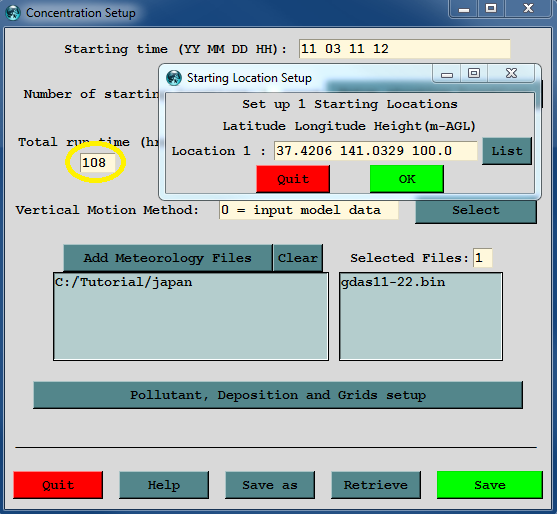
11 03 11 12 | simulation start |
37.4206 141.0329 100.0 | start location |
108 | run duration |
gdas11-22.bin | meteorology file |
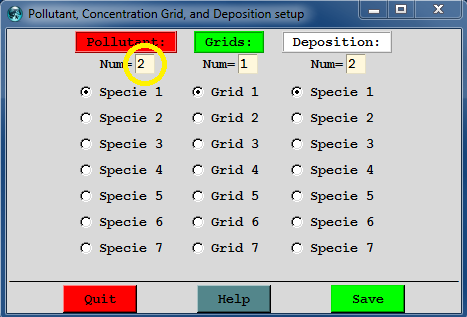
RNUC NGAS | emission species |
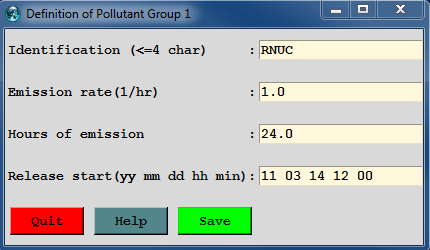
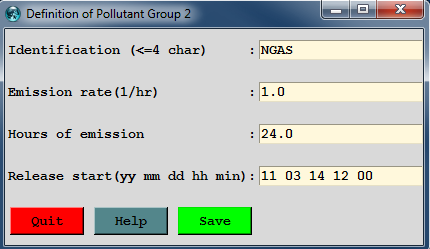
1.0 | emission rate |
24.0 | emission duration |
11 03 14 12 00 | emission start time |
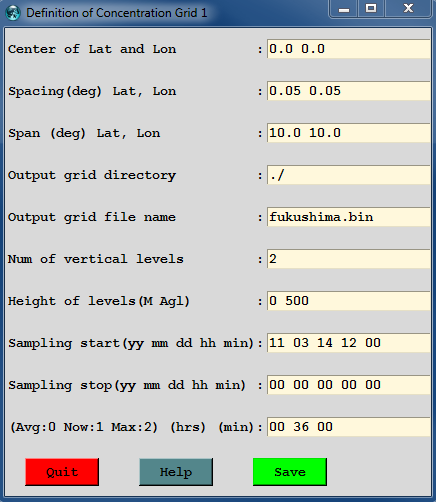
0.05 0.05 | sampling resolution |
0 500 | sampling layers |
11 03 14 12 00 | sampling start time |
00 36 00 | sampling duration |
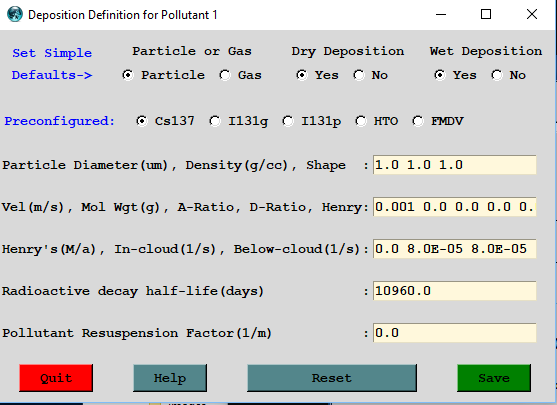
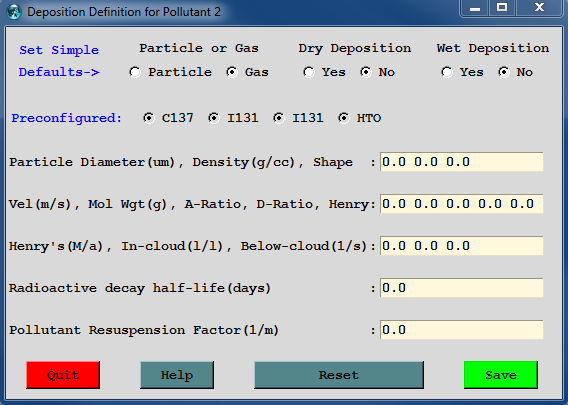
1.0 1.0 1.0 | particulate |
0.001 0.0 0.0 0.0 0.0 | dry deposition |
0.0 8.0E-05 8.0E-05 | wet deposition |
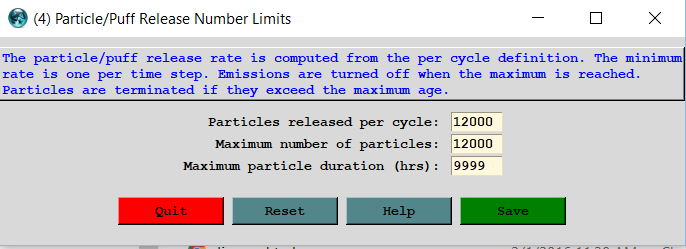
numpar = 12000 | particle number |
maxpar = 12000 | maximum particles |
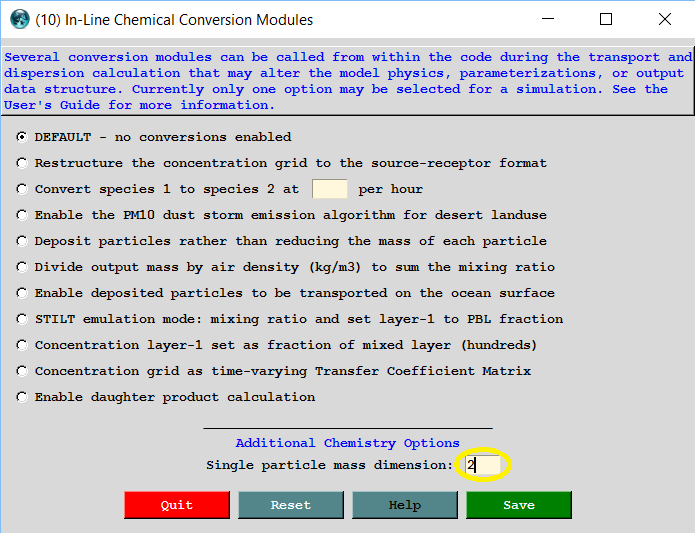
maxdim = 2 | species per particle |
Run Model
Apply emissions and dose conversion factors
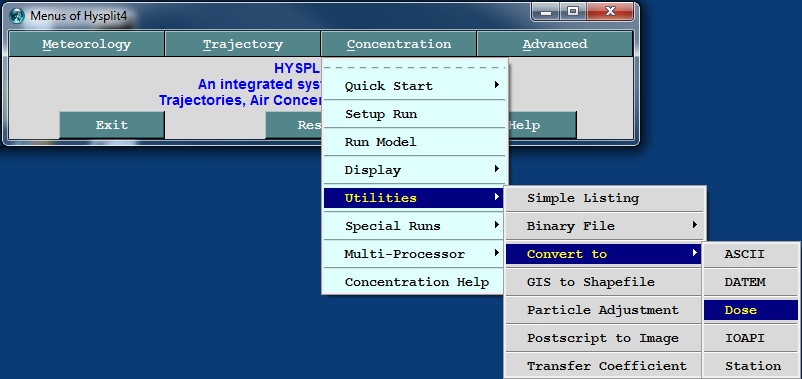
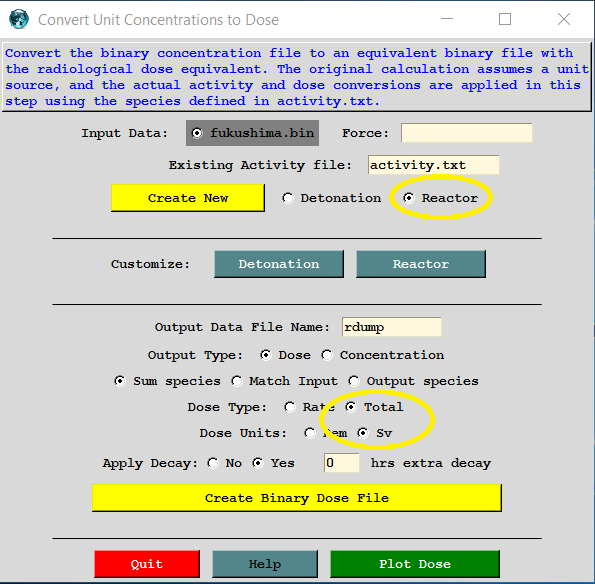

- In post processing each radionuclide in activity file is assigned a surrogate species
- Activity file can be modified for each phase of the accident
- No limit to the number of radionuclides assigned
Cloud-shine and Ground-shine
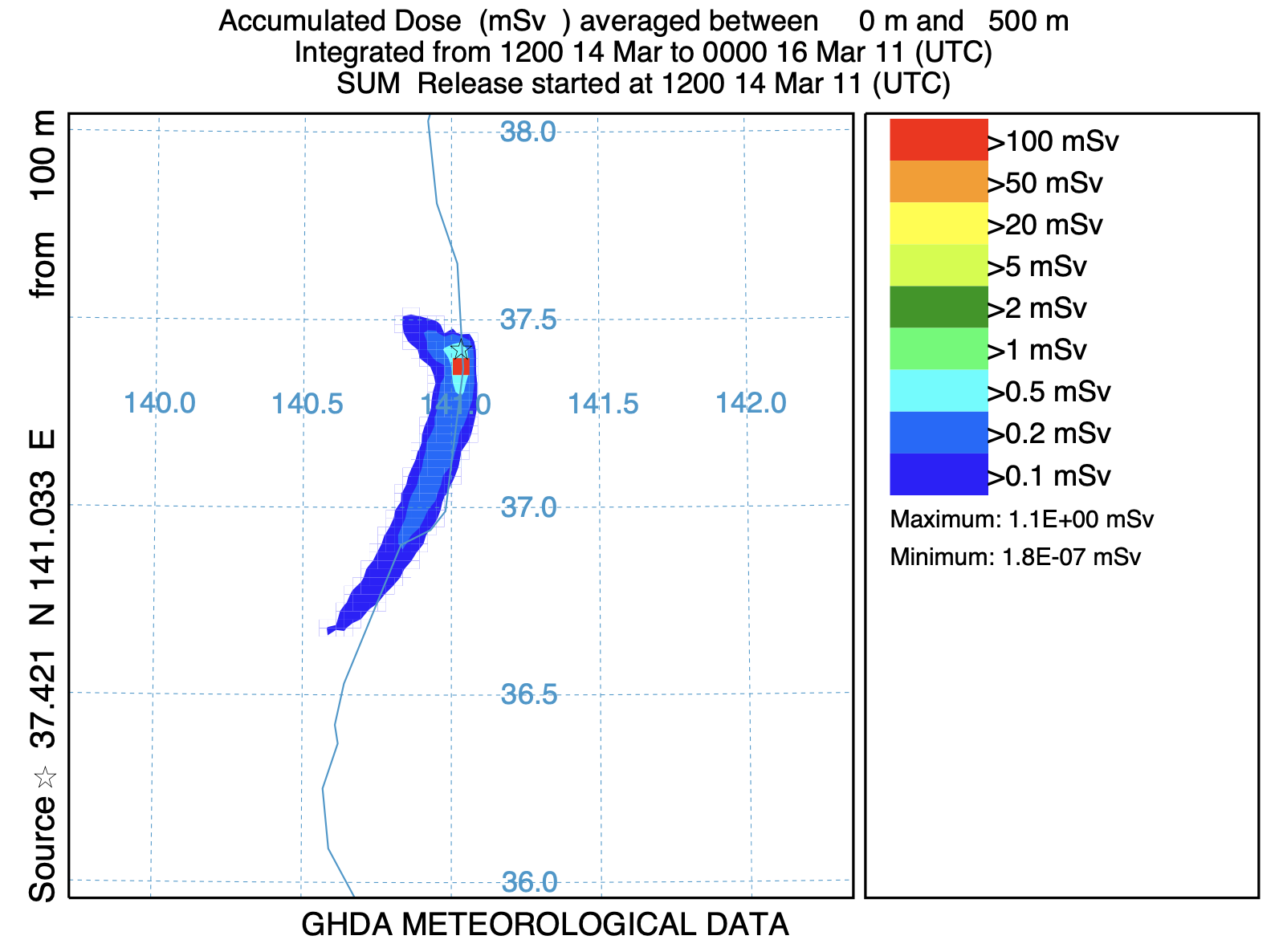
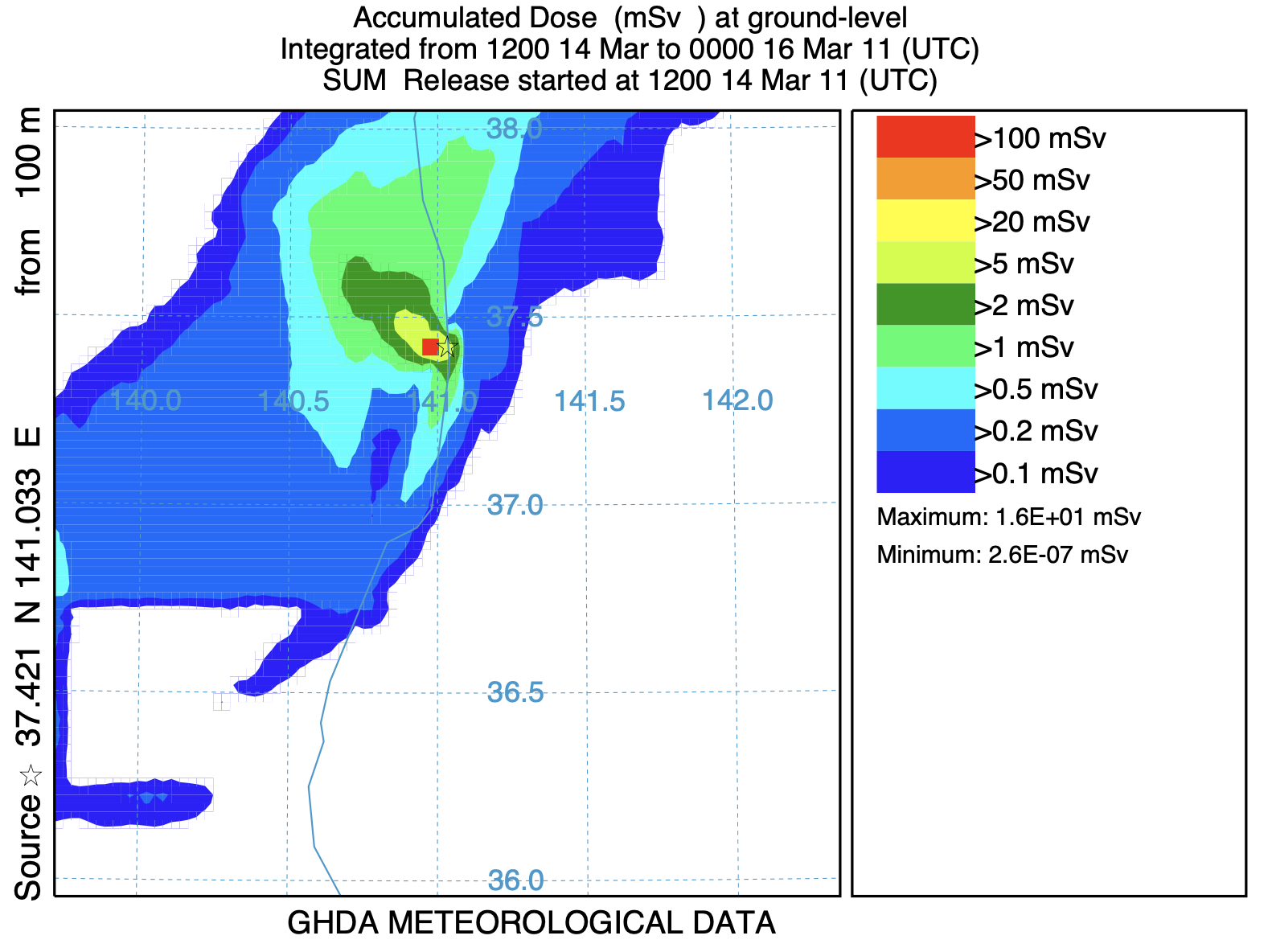
- Total air and ground dose computed (1 REM = 10 mSV)
- 3D particle near source results are sensitive to grid size
- Note the dependence of deposition to the resolution of the precipitation field
|













